Château de la Chasseigne: A Fascinating Tour of a French Count’s Abandoned Castle
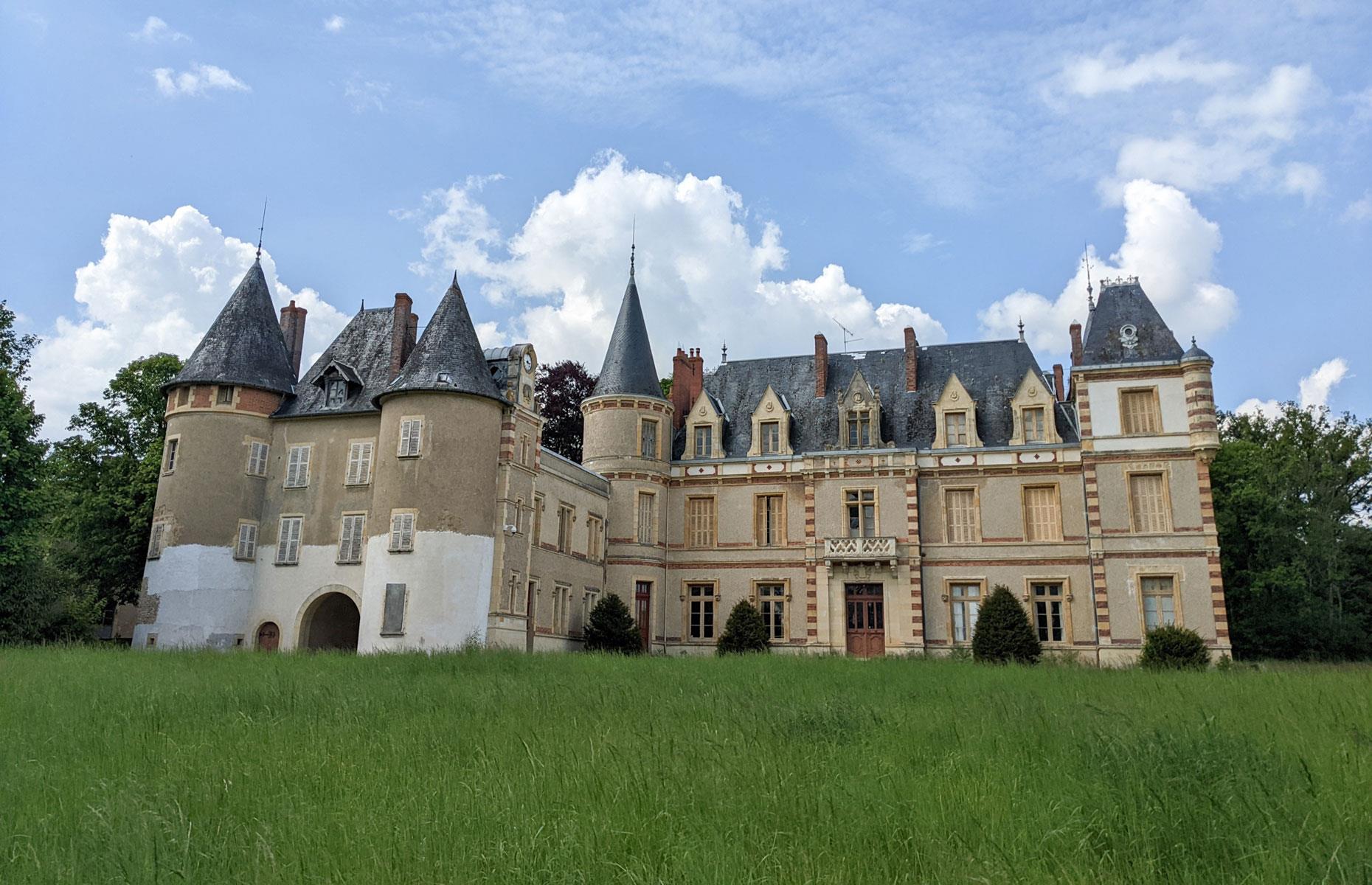
Dating back to the 15th century, this exquisitely captivating “secret” château in France’s Burgundy region became a favorite among urban exploration (urbex) enthusiasts after it was abandoned by its owners in 2017. Despite its allure, access to the property is now restricted to adventurers due to safety concerns. However, esteemed photographer Bryan Sansivero, renowned for his work in “American Decay,” had the opportunity to capture the château’s faded grandeur during his visit to France last summer. Explore the remarkable interior of this historical gem and uncover the reasons behind its neglect, as well as the ongoing efforts to preserve its splendor.
Referred to as the “secret château” within the urbex community, the Château de la Chasseigne remains discreetly nestled amidst a grove of oak trees near the village of Saint-Parize-le-Châtel in Burgundy’s Nièvre department. The property’s two fat round towers and connecting arched gallery, believed to be remnants of the original château, showcase its rich medieval heritage.
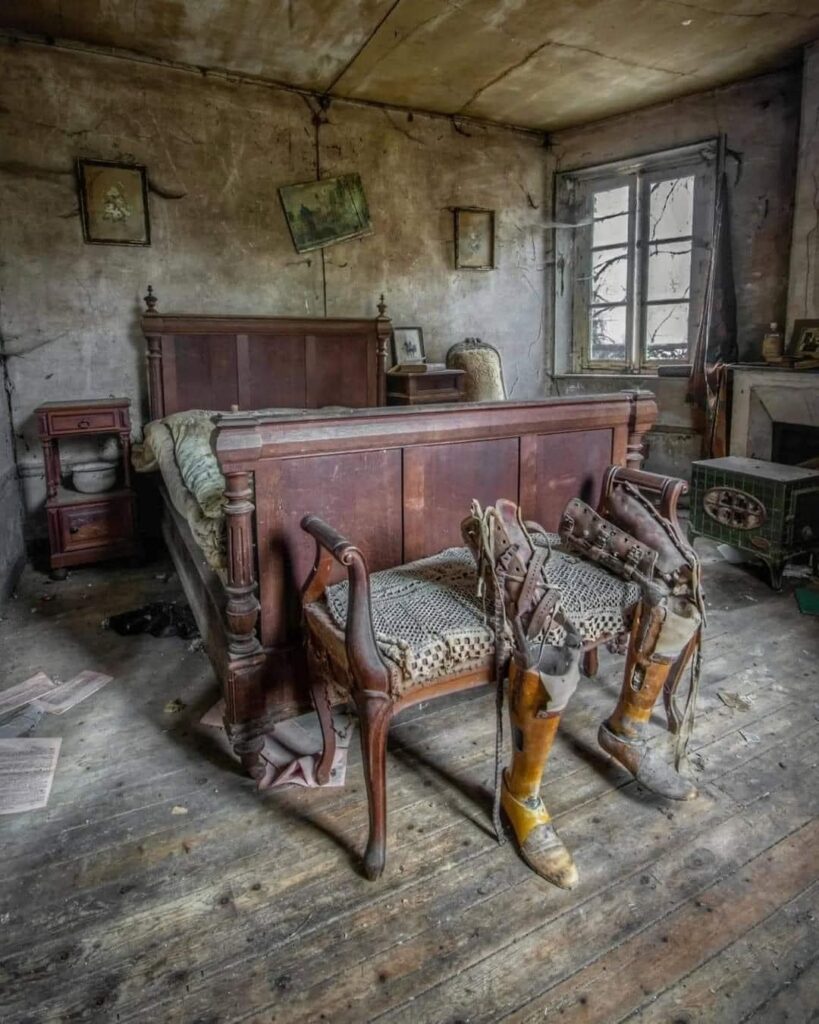
During the French Revolution, ownership of the château passed to the de Montrichard family, one of France’s oldest aristocratic lineages, through the marriage of a descendant of Robert de la Chasseigne to Count Gabriel-Étienne de Montrichard, a prominent general in King Louis XVI’s army. Thankfully, the château survived this tumultuous period, and subsequent generations undertook significant renovations in the neo-Renaissance style, enhancing its opulence and scale.
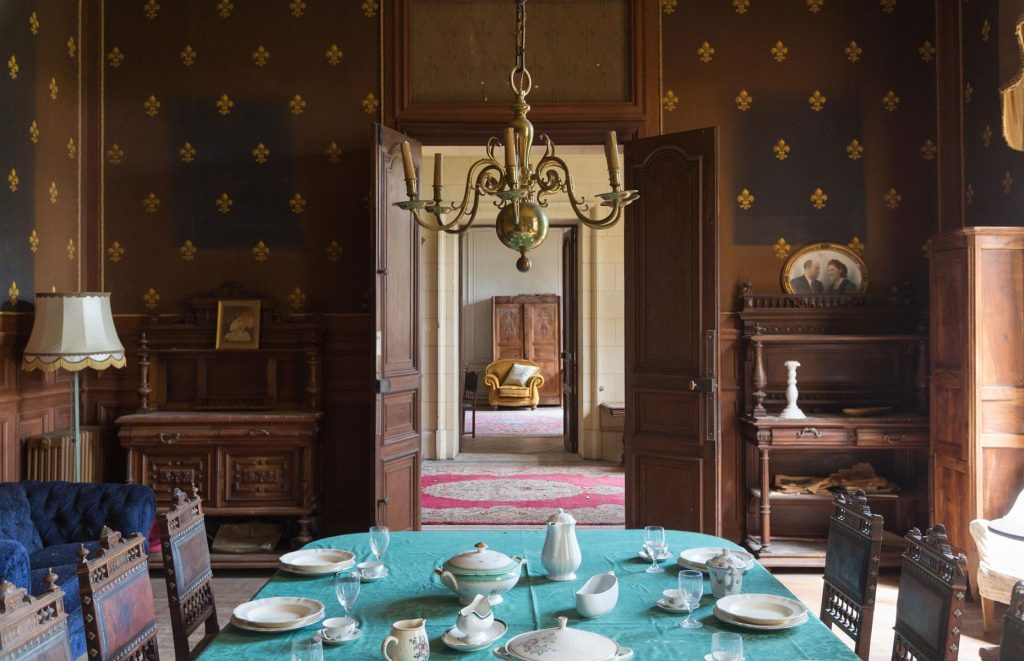
The imposing entrance hall, adorned with solid stone and a magnificent mosaic floor, showcases a majestic oak staircase, despite the presence of graffiti and torn wallpaper. Much of the property remains well-preserved, yet essential restoration work is required, including repairs to the roof, plumbing, and Burgundy stone masonry, as well as addressing areas affected by dry rot.
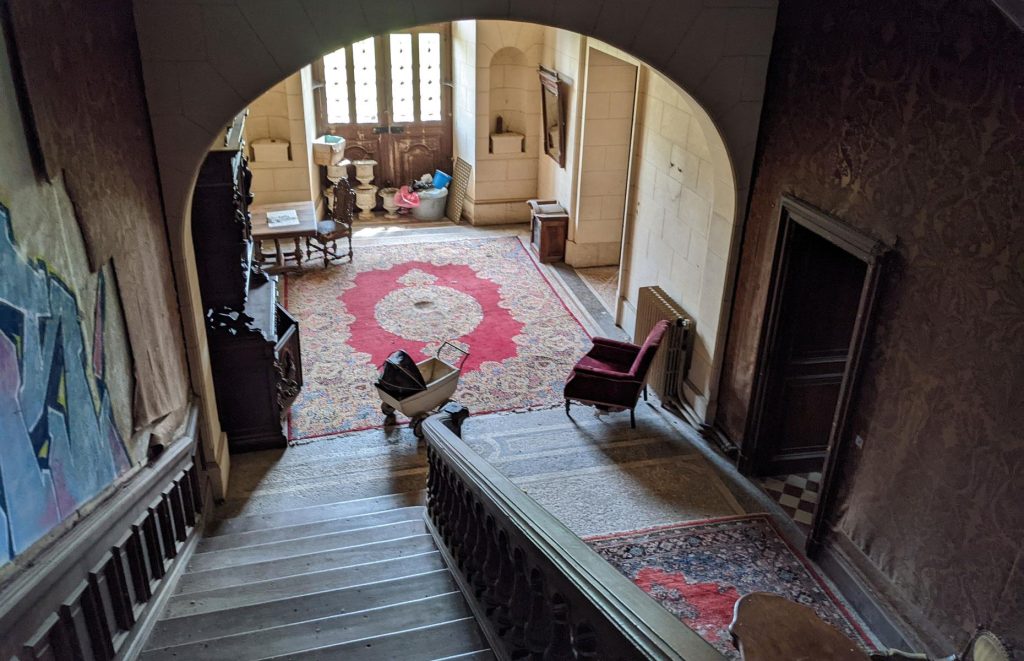
Within the grand salon, located to the right of the entrance hall, neo-classical wall paneling and pilasters exude a palatial ambiance. Interestingly, various furniture items within the château were sourced from the Emmaüs charity store chain, adding to its uniqueness and historical significance.
Notable among the treasures found in the château is a grand piano crafted by the esteemed Parisian maker Maison Pleyel, once favored by renowned composers like Chopin, Debussy, and Stravinsky. In the adjacent dining room, silk coverings adorned with gold fleur-de-lis, the emblem of French royalty, complement the wood-paneled walls and elegant cabinetry.
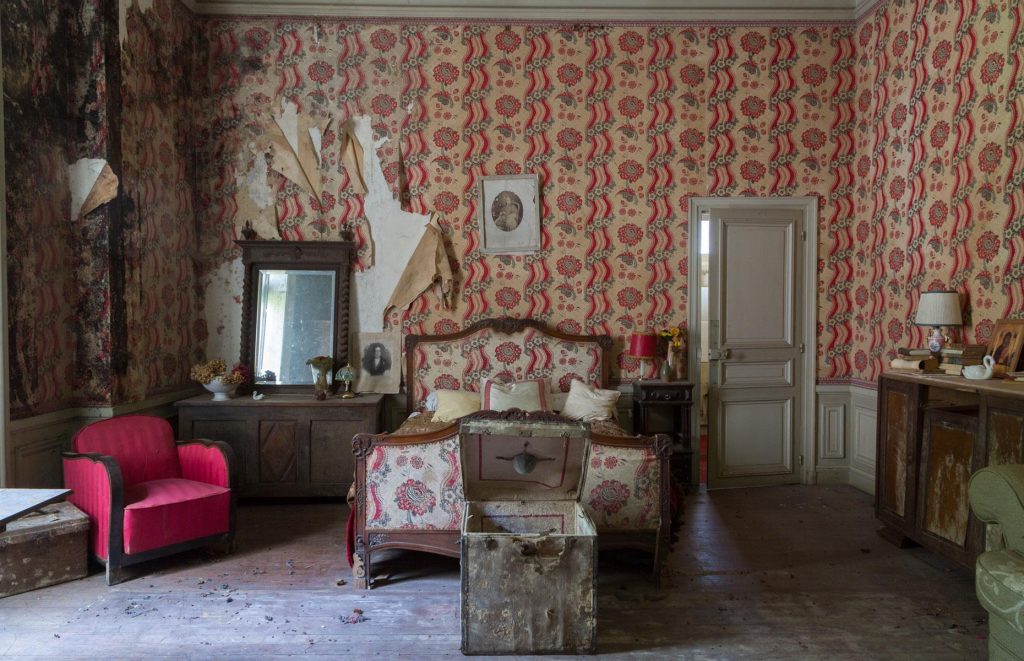
The château’s history continued through the centuries within the de Montrichard family until it eventually changed hands in 2003 when it was purchased by a local architect. However, the property’s maintenance became increasingly challenging, leading to its eventual sale to two Indonesian real estate investors in 2017, who reportedly planned to undertake its restoration.
Their ambitious plans include urging authorities to intervene and possibly transforming the château into a housing cooperative and restaurant. With the support of the community through crowdfunding, this initiative seeks to restore the master bedroom and other rooms to their former glory, ensuring the preservation of the château’s fascinating history and architectural splendor.
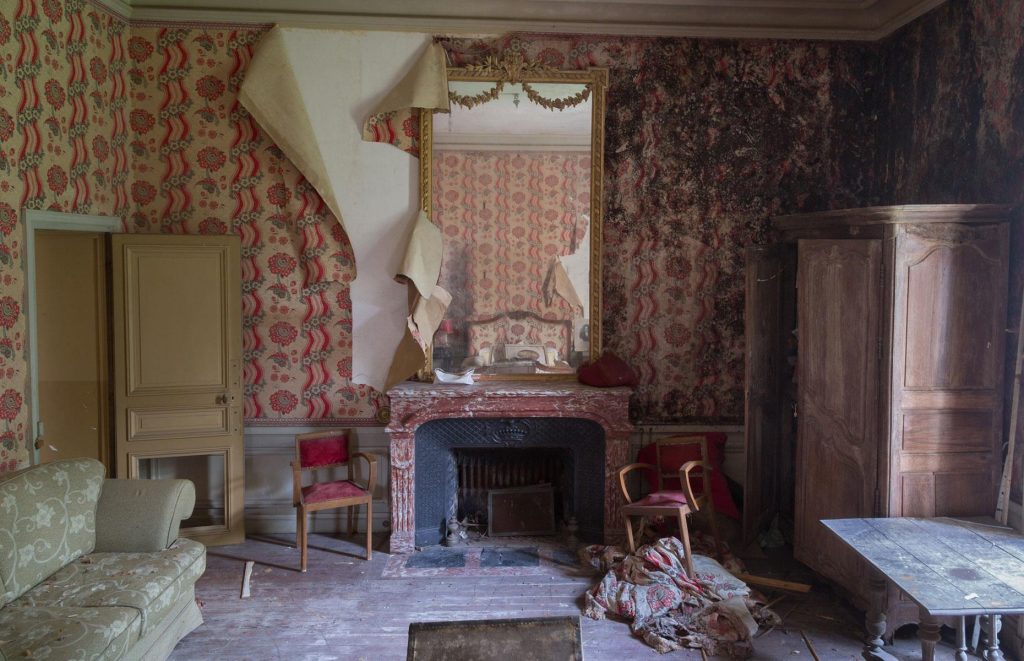
A door that leads into the magnificent family chapel with its stunning stained glass window is located at the rear of the entrance hall. It really is something special, bathing the sanctuary in a wonderful multicolored glow. Since the fervently Catholic Montrichards have included canons, abbots, abbesses, and an archbishop in their ranks, it stands to reason that the chapel is one of the most well-appointed areas in the château.
The following room you come to is the kitchen. The room appears to have not been updated since the 19th century, like entering a time warp. Old copper and cast iron pots and container swing from the walls, the work tables take a gander at least 100 years of age and the broiler is a genuine collectible. You can simply envision the workers hurrying around. Let’s go upstairs now.
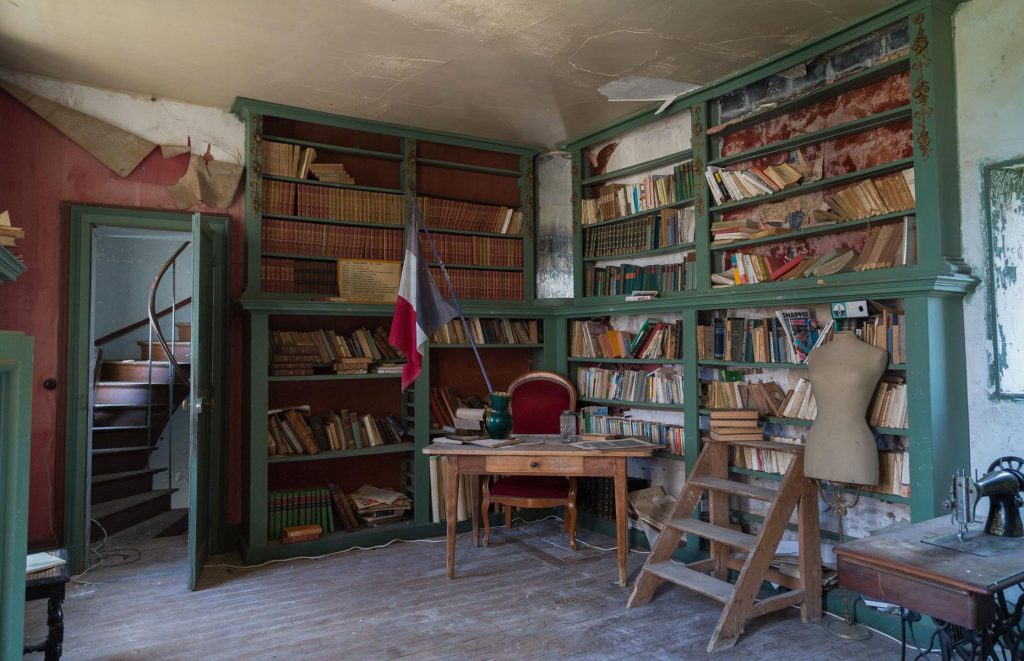
Landing on the first floor It is said that the foreign investors only came to the property once to sign the relevant sales documents. Locals say they haven’t heard from them since. Meanwhile, the assessments and different tolls they owe on the property have supposedly gone neglected. You reach the main landing on the first floor by climbing the staircase.
In 2020, the property grabbed the eye of four venturesome youngsters enthusiastically for conservation, who shaped the Companions of the Château de la Chasseigne Relationship to save it. We hope they’ve concentrated on the master bedroom, which is plagued by mold and requires serious renovation. Note the marble chimney and other choice unique highlights. It would surely be miserable to see them decay.
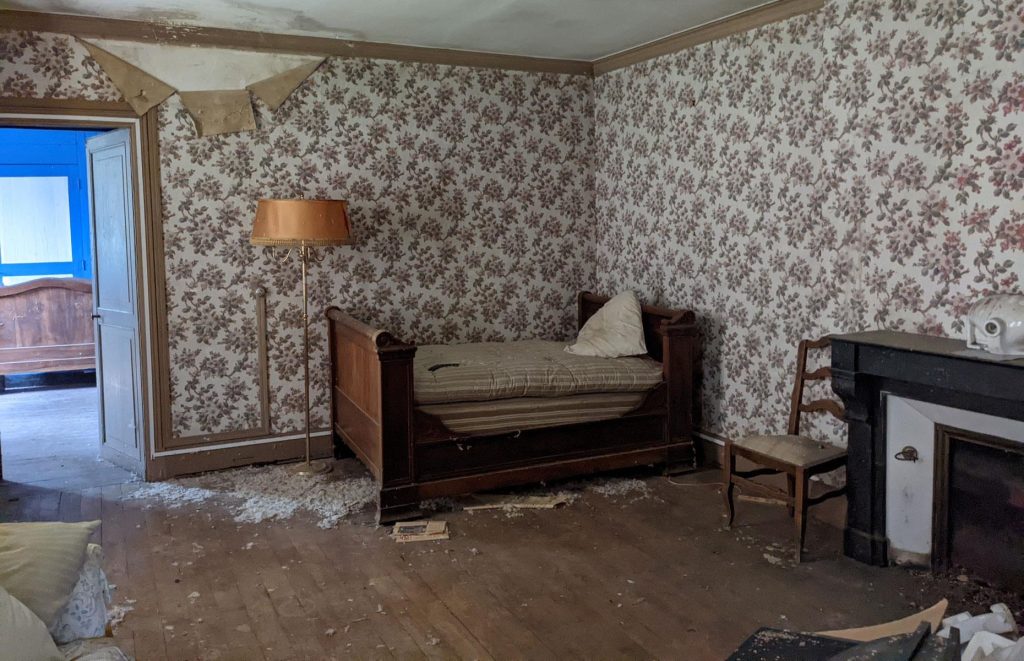
Plans for the renovation The group has started a campaign to get the government to take the property and even made a plan to turn it into a housing co-op and restaurant. The project, which would restore the master bedroom and other rooms to their former splendor, would be undertaken with the greater community’s benefit in mind and funded by crowdsourcing.
Throughout its exploration by urban adventurers, the château has garnered interest and rumors, with some even suggesting that it was once inhabited by a Norwegian victim of the Titanic disaster. While the property’s current state portrays a hauntingly captivating setting reminiscent of a Brothers Grimm tale, it is the hope of the preservation group that this château’s fairy tale can be one of restoration and safeguarding, ensuring its legacy remains intact for generations to come. The captivating architecture and profound historical significance of this property demand nothing less than a valiant effort to protect it from the ravages of time.
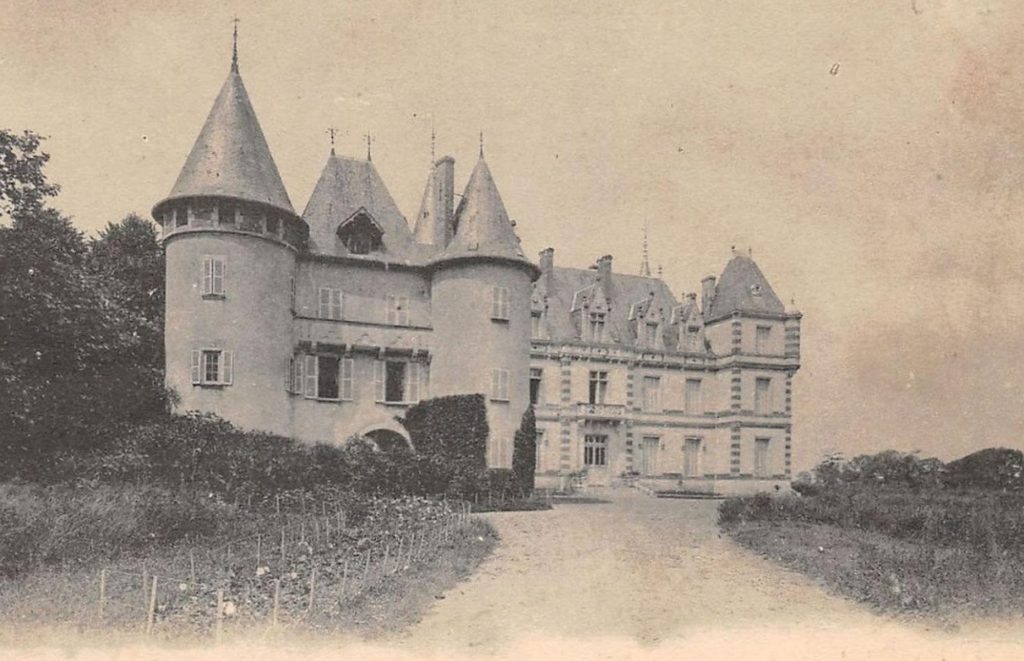
Image credits: Bryan Sansivero